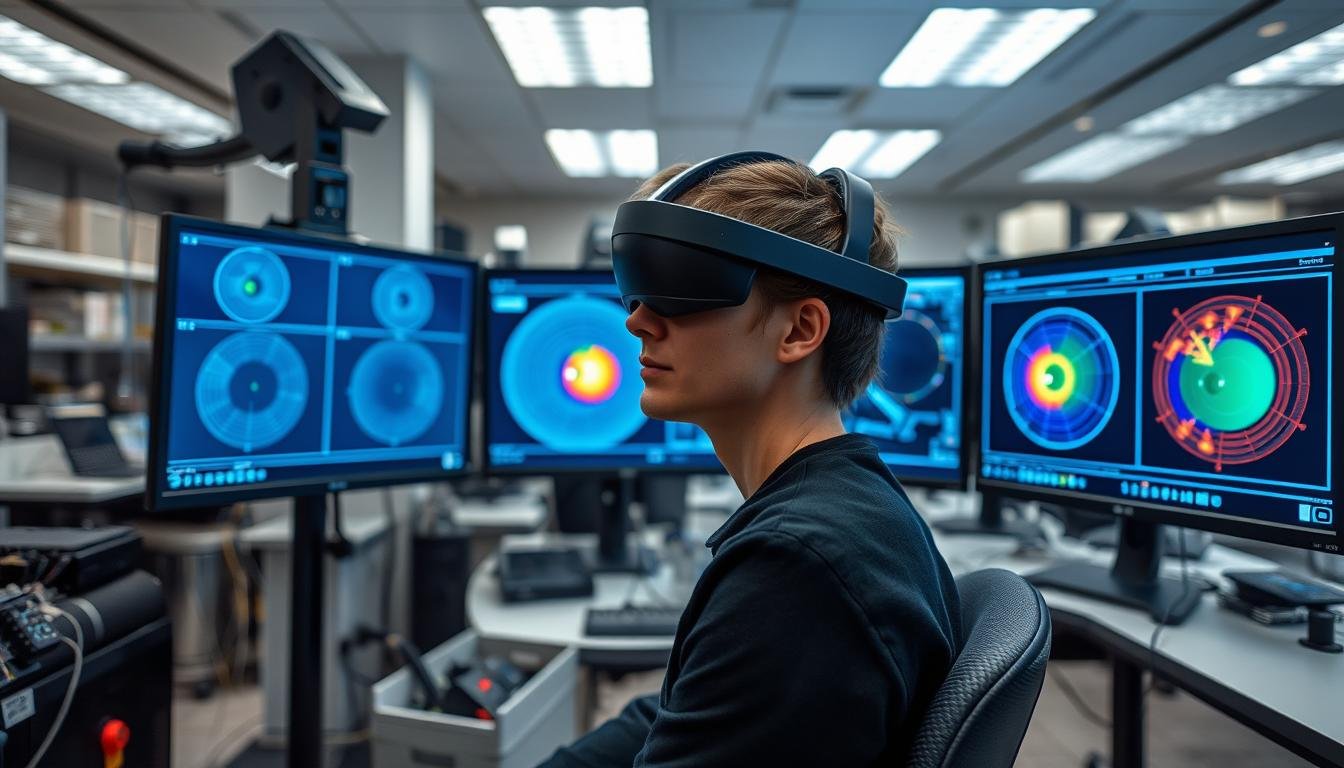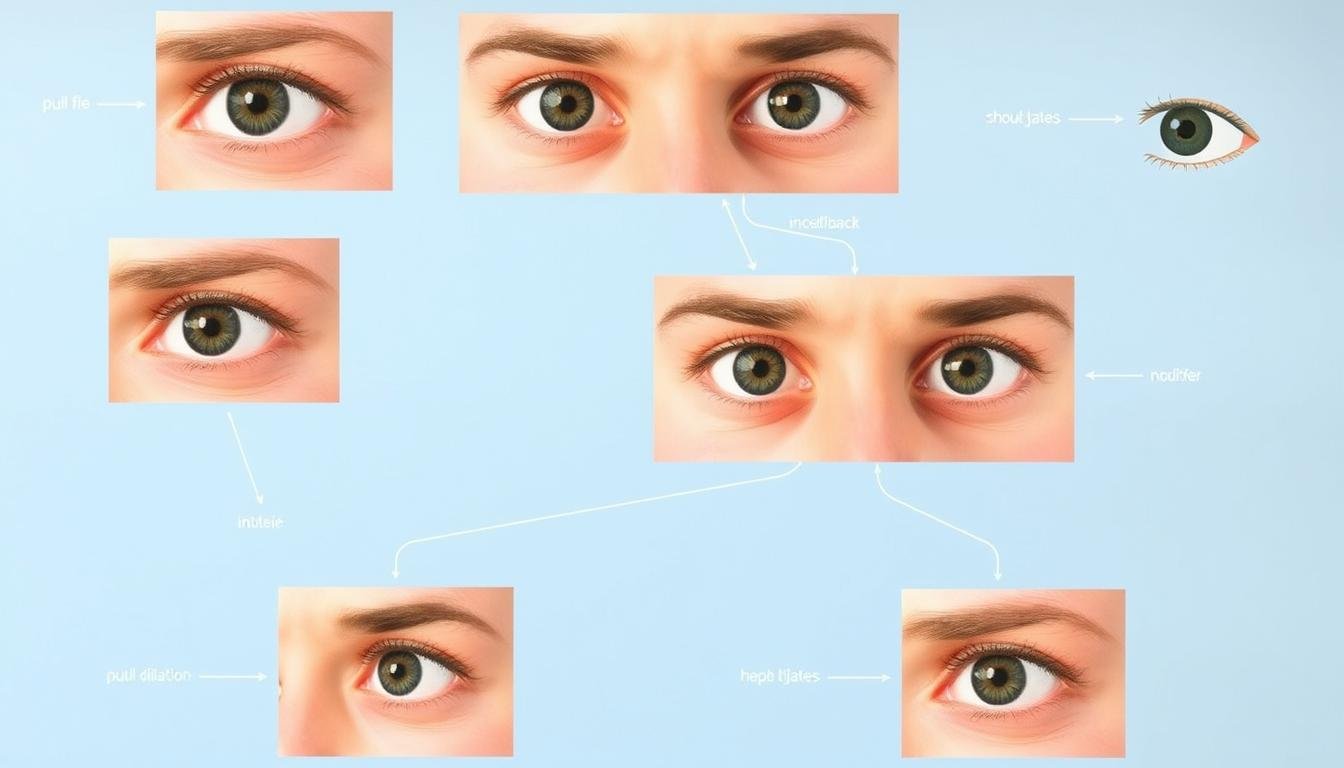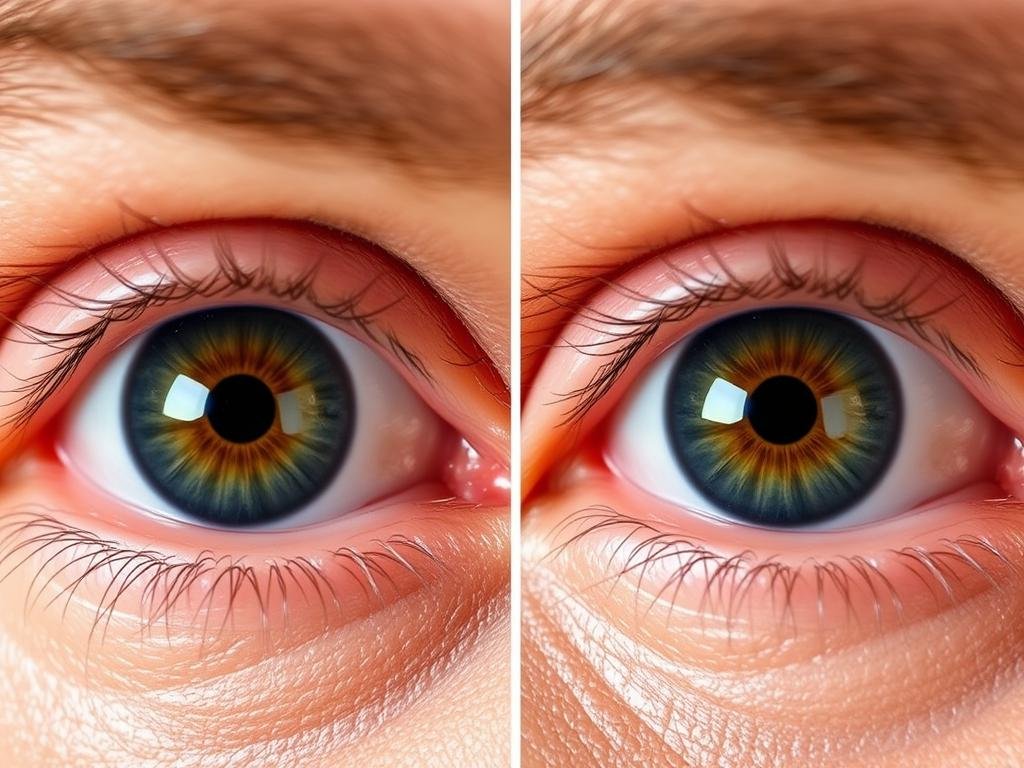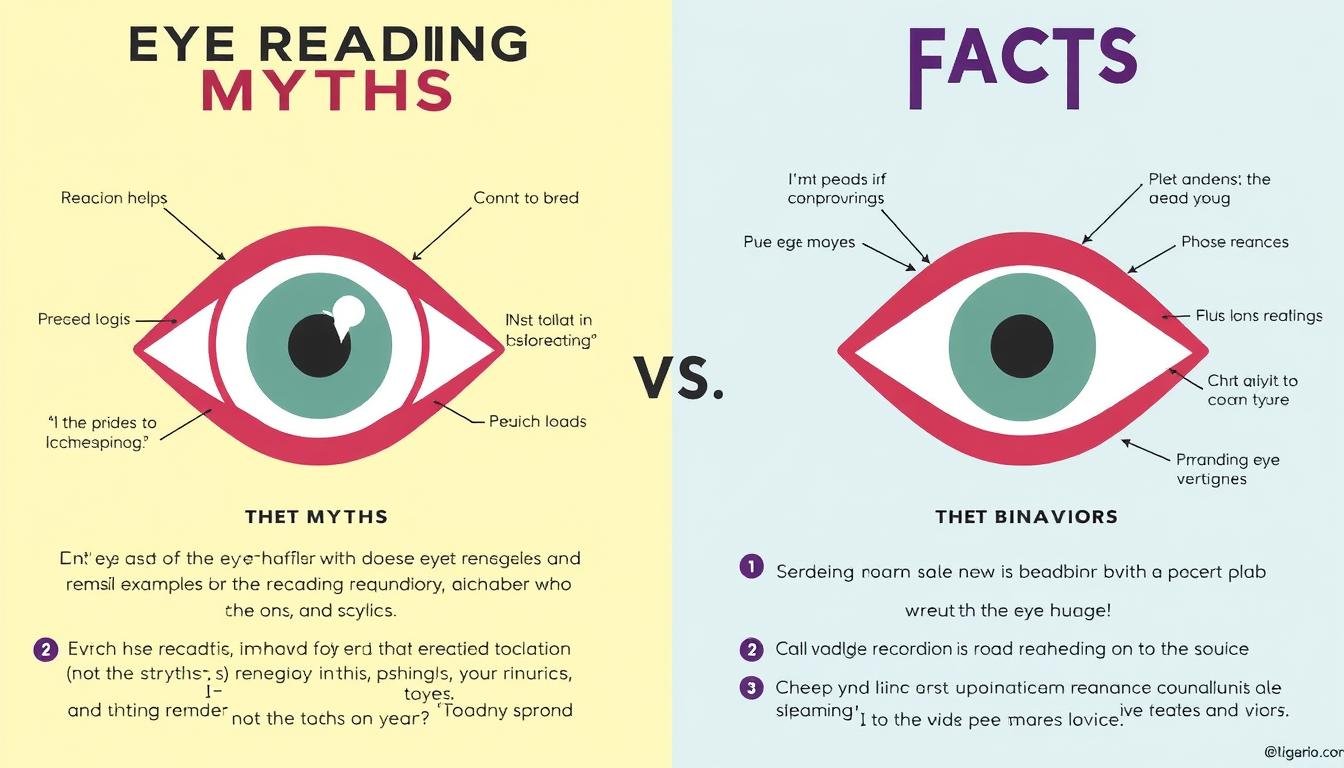Have you ever wondered what someone is really thinking behind those eyes? The ancient saying “eyes are the windows to the soul” holds more scientific truth than you might expect. Eye reading—the art and science of interpreting emotions, intentions, and even health conditions through eye movements, pupil dilation, and other ocular behaviors—can transform how you understand and connect with others. In this comprehensive guide, we’ll explore the fascinating world of eye reading, backed by scientific research and practical techniques you can start using today.

What Is Eye Reading and Why Does It Matter?
Eye reading involves analyzing subtle eye movements and expressions to understand emotions and intentions
Eye reading is the practice of observing and interpreting eye behaviors to gain insights into a person’s thoughts, emotions, and intentions. Unlike traditional body language analysis, eye reading focuses specifically on ocular behaviors—pupil dilation, eye movement patterns, blinking rates, and gaze direction—to decode what’s happening beneath the surface.
The significance of eye reading extends beyond casual curiosity. Our eyes reveal information we often can’t control consciously, making them one of the most reliable indicators of our true feelings. Whether you’re a psychologist, business professional, or simply someone looking to improve personal relationships, understanding eye reading can provide valuable insights that words alone might miss.
The Science Behind Eye Reading
The human eye is controlled by six muscles that create various movements, while the pupil’s size is regulated by the autonomic nervous system—the same system that controls our fight-or-flight response. This connection explains why our eyes often betray our emotions even when we try to hide them. Research from the University of Michigan has shown that eye movements are directly linked to brain activity in regions associated with emotional processing and decision-making.
When we experience emotions like fear, excitement, or attraction, our pupils dilate involuntarily. This physiological response dates back to our evolutionary past, when wider pupils allowed more light in during dangerous situations, improving our chances of survival. Today, these same mechanisms provide valuable clues about our internal states.
Practical Applications of Eye Reading
Psychology & Therapy
Psychologists use eye reading to assess emotional responses, trauma reactions, and cognitive processing. Eye Movement Desensitization and Reprocessing (EMDR) therapy specifically utilizes directed eye movements to help process traumatic memories.
Business & Negotiations
In business settings, eye reading helps gauge interest, detect deception, and understand unspoken concerns during negotiations. Sales professionals use pupil dilation to identify genuine interest in products or services.
Law Enforcement
Police and security professionals analyze eye behaviors during interviews to detect potential deception. Rapid blinking, avoidance of eye contact, and pupil constriction can indicate stress or dishonesty when combined with other behavioral cues.
Eye-Tracking Technology

Eye-tracking technology provides precise data on where and how long people look at specific elements
Modern eye-tracking technology has revolutionized how we study eye reading. These sophisticated systems can measure exactly where someone is looking, how long they focus on specific elements, and the pattern of their eye movements. This technology has applications in:
- Market research and advertising effectiveness studies
- User experience (UX) design for websites and applications
- Medical diagnostics for neurological conditions
- Driver alertness monitoring in automotive safety systems
- Academic research on attention and cognitive processing
A 2022 study published in the Journal of Consumer Research found that eye-tracking data could predict purchasing decisions with 78% accuracy by analyzing how consumers visually engaged with products and pricing information.
Scientific Studies Supporting Eye Reading

Research has validated many eye reading techniques through controlled scientific studies
The field of eye reading is supported by a growing body of scientific research. Here are some key studies that validate various aspects of eye reading:
Pupil Dilation and Emotional Response
Research from the University of California found that pupil dilation correlates strongly with emotional arousal. In their 2019 study, participants were shown various emotional images while their pupil sizes were measured. Positive and negative emotionally charged images caused significantly greater pupil dilation than neutral images, regardless of lighting conditions.
Eye Movement Patterns and Deception
A comprehensive meta-analysis published in Psychological Bulletin examined 158 studies on eye behaviors during deception. While debunking some myths (like the belief that looking up and to the right always indicates lying), the research confirmed that certain patterns—such as decreased blinking followed by rapid blinking after a deceptive statement—were statistically significant indicators of dishonesty when combined with other behavioral cues.
Gaze Direction and Cognitive Processing
Neuroscientists at Oxford University used fMRI scanning while tracking eye movements to demonstrate that specific eye directions correlate with different types of cognitive processing. Looking up often indicates visual thinking, while looking to the sides frequently correlates with auditory processing. This research supports the practical application of eye reading in understanding how someone is processing information.
“The eyes don’t lie because their responses are largely governed by the autonomic nervous system, which operates below the level of conscious control. This makes eye behaviors one of the most reliable windows into genuine emotional and cognitive states.”
— Dr. Paul Ekman, pioneering researcher in facial expressions and emotions
Cultural Differences in Eye Reading
Research from the University of Tokyo has highlighted important cultural variations in eye behaviors. Their cross-cultural studies found that while pupil dilation remains a universal indicator of emotional arousal, eye contact norms vary significantly. For example, in many East Asian cultures, prolonged direct eye contact can be perceived as disrespectful, whereas in Western cultures, it’s often associated with confidence and trustworthiness.
Step-by-Step Eye Reading Techniques

Learning to recognize specific eye patterns is essential for accurate eye reading
Establishing a Baseline
Before attempting to read someone’s eyes, you need to establish their baseline behaviors—how their eyes behave when they’re relaxed and not under pressure. This crucial first step helps you identify deviations that might indicate emotional changes.
- Observe the person during casual, non-threatening conversation
- Note their typical blink rate (average is 15-20 blinks per minute)
- Observe their natural pupil size in consistent lighting
- Pay attention to their default eye contact patterns
- Notice their habitual eye movements when thinking or speaking
Reading Pupil Dilation
Pupil size changes can reveal emotional states and interest levels. Here’s how to interpret them:

Pupil dilation occurs involuntarily in response to emotional stimuli and interest
- Dilated pupils (larger than baseline): Indicates interest, attraction, excitement, or sometimes fear. In consistent lighting, pupil dilation often reveals genuine engagement with a person or topic.
- Constricted pupils (smaller than baseline): May indicate dislike, disapproval, or concentration on details. Pupils also constrict in bright light, so always account for lighting changes.
- Fluctuating pupil size: Can indicate changing emotional states or internal conflict about a topic.
To practice this technique, observe someone’s pupils while discussing neutral topics, then introduce something they’re passionate about and watch for dilation.
Interpreting Eye Movement Patterns
Eye movements often correlate with different types of mental processing:

Different eye movement directions can indicate various types of cognitive processing
- Looking up: Often associated with visual thinking or memory recall
- Looking to the sides: Frequently indicates auditory processing or sound recall
- Looking down: Often connected to internal feelings or kinesthetic processing
- Rapid side-to-side movement: May indicate stress, searching for answers, or constructing information
Remember that these patterns vary by individual and should be compared to the person’s baseline behaviors rather than treated as universal rules.
Analyzing Blink Rate
Blinking patterns can reveal stress levels and cognitive load:
- Increased blinking: Often indicates stress, anxiety, or discomfort with a topic
- Decreased blinking: May signal intense focus, interest, or cognitive processing
- Prolonged staring without blinking: Can indicate shock, surprise, or an attempt to intimidate
- Pattern of rapid blinks followed by a pause: Often seen during deception or when constructing rather than recalling information
To practice this technique, count someone’s blinks during normal conversation, then introduce a stressful or complex topic and observe any changes.
Common Myths vs. Facts About Eye Reading

Separating eye reading myths from scientifically-backed facts is essential for accurate interpretation
Eye Reading Facts
- Pupil dilation is an involuntary response controlled by the autonomic nervous system and reliably indicates emotional arousal
- Blink rate changes correlate with cognitive load and stress levels
- Eye contact patterns vary significantly across cultures
- Eye movements can indicate different types of cognitive processing
- Micro-expressions around the eyes (like the Duchenne smile) can reveal genuine versus forced emotions
Eye Reading Myths
- Looking up and to the right always indicates lying (research shows eye direction alone cannot reliably detect deception)
- Avoiding eye contact automatically means someone is being dishonest (cultural norms and neurodiversity affect eye contact)
- You can determine someone’s exact thoughts just by their eye movements
- Eye reading works the same way for everyone (individual differences and baselines matter significantly)
- Eye reading alone is sufficient for lie detection (multiple behavioral cues should always be considered)
The Neurodiversity Consideration
An important fact often overlooked in eye reading discussions is neurodiversity. People with autism spectrum conditions, certain anxiety disorders, or ADHD may display atypical eye behaviors that don’t follow standard patterns. For example, many autistic individuals find direct eye contact uncomfortable or overwhelming, which doesn’t indicate dishonesty or disinterest.
A 2021 study in the Journal of Autism and Developmental Disorders found that traditional eye reading techniques needed significant modification when applied to neurodiverse populations. This highlights the importance of considering individual differences and avoiding rigid interpretations of eye behaviors.
Notă importantă: Eye reading should always be used as one component of a broader behavioral analysis, never in isolation. Cultural differences, individual baselines, and neurodiversity must be considered for accurate interpretation.
Using Eye Reading in Daily Interactions

Eye reading can enhance everyday communications and relationships
Professional Settings
In workplace environments, eye reading can help you navigate complex interpersonal dynamics:
- During presentations: Scan the room to identify engaged listeners (dilated pupils, steady gaze) versus disinterested attendees (wandering eyes, increased blinking). Adjust your delivery accordingly.
- In negotiations: Watch for pupil dilation when discussing specific terms—it often indicates genuine interest or concern about a particular point.
- With colleagues: Notice eye contact patterns to gauge comfort levels and build rapport appropriately. Some colleagues may prefer less direct eye contact.
- In leadership: Learn to recognize stress signals in team members’ eyes (increased blinking, pupil constriction) to address concerns before they escalate.
Personal Relationships

Eye contact patterns reveal important information about relationship dynamics
Eye reading can strengthen personal connections and improve communication:
- With partners: Learn to recognize your partner’s unique eye patterns that indicate happiness, stress, or concern. This awareness can help you respond more empathetically.
- With children: Children’s eyes often reveal emotions they can’t verbalize. Watch for pupil changes and eye movements to better understand their needs.
- In new relationships: Mutual pupil dilation during conversation often indicates shared interest and attraction.
- During conflicts: Eye behaviors can signal when someone is becoming overwhelmed (rapid blinking, looking away) and might need a break from the discussion.
Practical Exercise: The Three-Second Connection
Try this simple exercise to improve your eye reading skills in daily life:
- During your next conversation, maintain comfortable eye contact for three seconds
- Note the other person’s pupil size, blink rate, and eye movements
- Look briefly away (to avoid staring), then reconnect
- Observe any changes in their eye behaviors when different topics arise
- Practice this regularly to become more attuned to subtle eye cues
This exercise helps train your observation skills without making others uncomfortable. With practice, you’ll begin noticing patterns that provide valuable insights into others’ emotional states.
Frequently Asked Questions About Eye Reading

Common questions about the science and application of eye reading
Can eye reading accurately predict personality traits?
While eye behaviors can provide insights into certain personality aspects, they cannot comprehensively predict personality. Research from the University of Melbourne found correlations between specific eye movement patterns and traits like extraversion and openness to experience, but these correlations are not strong enough for definitive personality assessment. Eye reading is most valuable when combined with other behavioral observations and contextual information.
How accurate is eye reading for detecting lies?
Eye reading alone is not sufficiently accurate for lie detection. The popular belief that looking up and to the right indicates lying has been debunked by multiple studies. However, clusters of eye behaviors—such as changes in blink rate, pupil constriction, and eye contact patterns—can contribute to deception detection when combined with other behavioral cues. Even trained professionals typically achieve only 65-75% accuracy in lie detection using multiple behavioral indicators.
Can I improve my eye reading skills with practice?
Yes, eye reading is a skill that improves with deliberate practice. Research from the University of Chicago showed that participants who received just four hours of training in reading facial micro-expressions (including eye cues) improved their accuracy by 40%. Regular practice observing eye behaviors, establishing baselines, and correlating observations with confirmed emotional states will enhance your eye reading abilities over time.
Do eye reading techniques work across different cultures?
Some aspects of eye reading are universal while others vary culturally. Pupil dilation as a response to emotional arousal is consistent across cultures. However, eye contact norms differ significantly—in many East Asian cultures, prolonged direct eye contact can be considered disrespectful, while in Western cultures, it often signifies attentiveness and confidence. Effective eye reading requires cultural awareness and adaptation of interpretation frameworks.
Can eye reading help with sales and marketing?
Yes, eye reading has valuable applications in sales and marketing. Eye-tracking studies help marketers understand which elements of advertisements capture attention. For salespeople, observing pupil dilation can indicate genuine interest in products or services. A 2020 study in the Journal of Consumer Psychology found that salespeople trained in basic eye reading techniques closed 23% more sales by better identifying customer interest and concerns through eye cues.
Is eye reading considered pseudoscience?
While some popular claims about eye reading lack scientific support, the core principles are grounded in legitimate research. The study of pupil dilation, eye movement patterns, and blink rates has substantial scientific backing from fields including neuroscience, psychology, and physiology. What often ventures into pseudoscience are oversimplified interpretations or claims of 100% accuracy. Evidence-based eye reading acknowledges limitations and relies on patterns rather than isolated cues.
Mastering the Art of Eye Reading

With practice, eye reading can become a valuable skill in your communication toolkit
Eye reading is both an art and a science—a skill that combines scientific knowledge with intuitive observation. By understanding the physiological basis of eye behaviors and practicing deliberate observation, you can gain valuable insights into others’ emotions, interests, and cognitive processes.
Remember that effective eye reading requires:
- Establishing individual baselines before interpreting deviations
- Considering cultural and neurodiversity factors
- Looking for clusters of behaviors rather than isolated cues
- Practicing regularly in various contexts
- Using your observations ethically to improve communication, not manipulate
As you develop your eye reading skills, you’ll likely notice improvements in your emotional intelligence, communication effectiveness, and relationship quality. The eyes truly are windows—not just to the soul, but to the complex interplay of emotions, thoughts, and intentions that make us human.
“The eyes observe what the mind is prepared to comprehend. By training yourself to notice subtle eye behaviors, you expand your capacity for understanding others at a deeper level.”
— Dr. Sarah Richardson, Behavioral Psychologist
Referințe și lecturi ulterioare
- Ekman, P., & Friesen, W. V. (2003). Unmasking the Face: A Guide to Recognizing Emotions from Facial Clues. Malor Books.
- Navarro, J. (2018). The Dictionary of Body Language: A Field Guide to Human Behavior. William Morrow.
- Kahneman, D. (2011). Thinking, Fast and Slow. Farrar, Straus and Giroux.
- Journal of Experimental Psychology (2019). “Pupillary Responses as Indicators of Cognitive and Emotional Processing.”
- Psychological Bulletin (2020). “Meta-Analysis of Nonverbal Accuracy in Deception Detection.”
- Journal of Cross-Cultural Psychology (2021). “Cultural Variations in Eye Contact and Nonverbal Communication.”
- Journal of Neuroscience (2018). “Eye Movements and Cognitive Processing: Neural Correlates and Behavioral Implications.”
- Journal of Consumer Research (2022). “Eye-Tracking in Marketing: Predicting Consumer Behavior Through Visual Attention.”



































